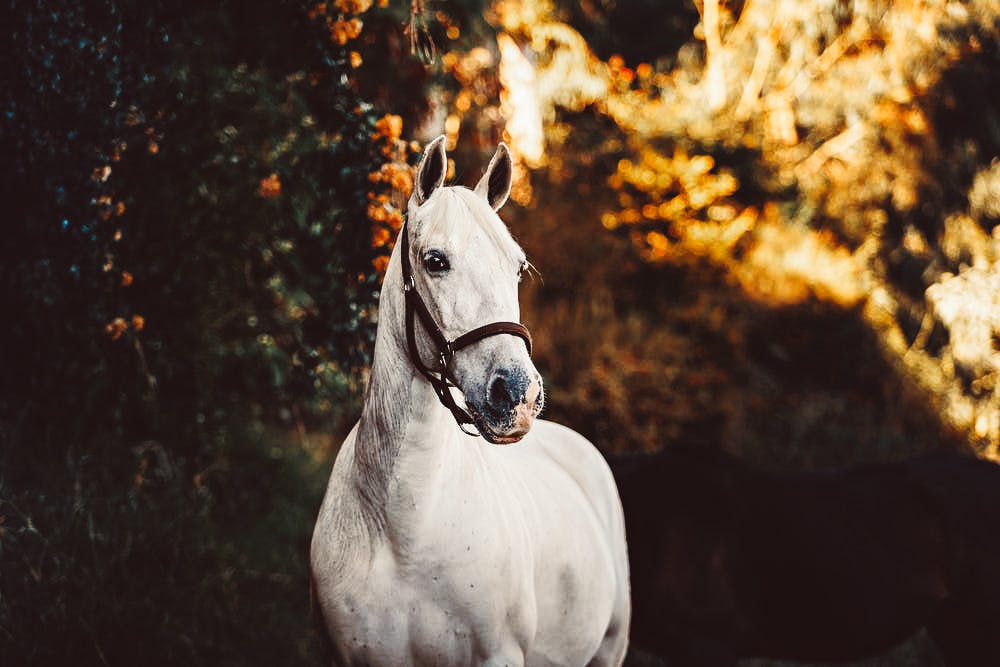Anyone living on an acreage with horses knows just how much joy these creatures can bring. They make wonderful friends, are beautiful to look at, and are a great way to get around your property.
Those with horses also know that there is another – much less glamorous – “benefit” of owning these majestic animals…their waste. That’s right, today we’re going to talk about horse manure!
The average horse produces over eight tons of waste a year. Eight tons! But thankfully, horse manure is one of the easiest, most eco-friendly ways to turn your four-legged friends into gardening superheroes. And since you’re going to be cleaning their stalls anyways, why not put that waste to use, and create nutrient-rich manure in the process?
Best of all, it’s not as difficult (or even as gross) as one might think. All it takes is a little knowhow and a little elbow grease. And thankfully as a country girl myself, I am here to show you the steps for turning your acreage horses in manure machines.
Compost v. Manure
One of the first questions you may be asking is “what’s the difference between compost and manure?” Some might even interchange these two works. And while both can do wonders for your lawn and your gardens, they are in fact two very different materials.
Put simply, compost is the result of decomposed organic material. Think paper products, yard clippings, organic food waste, wood chips, etc. Placed in a pile and properly tended to, this material will break down over time into a fluffy mulch-like substance that can be spread onto gardens to provide essential nutrients.
Manure, on the other hand, is made up of animal feces, urine, bedding, spilled feed and runoff. Basically, everything you would sweep up in the regular cleaning of your horse stalls.
Now this is where things get a little confusing, since in order to have manure that’s safe to use on plants and gardens, it must be “composted”. Meaning it has to go through the same process of decomposition as your regular compost pile. This composting will break down all the different elements of your manure, kill bacterial and other harmful items, and turn it into a usable, top-soil like substance.
Where to Store Your Manure
Now that you know the difference between compost and manure, it’s time to start building out your own manure pile on your acreage.
It’s important to pick a spot that can be accessed year-round. Avoid areas with known flooding concerns, or near water sources, as a soaked manure pile is not only unsanitary – risking contamination of surface or groundwater – but it can also disrupt months of decomposition.
Finally, be sure your planned space is level, and that there is enough room to maneuver yourself with shovels and wheelbarrows, and if so inclined, a small tractor as well.
How to Store Your Manure
There are two main methods for storing manure: bins and piles. While properly tended to piles do just fine, they are certainly less visually pleasing than building dedicated bins. Plus, bins help keep things organized much better, and can make the ongoing maintenance of your manure less time consuming.
If you do choose to build bins, there are seemingly endless videos and tutorials online. Pallets, cinder blocks, timbers, and bricks can all do the trick. Just be sure you have room to build three equal size bins that can accommodate a pile of at least 3 cubic feet (think the size of a washing machine). Anything smaller and you’re going to run into problems.
You’ll also want to be sure that you have some sort of cover for all three piles. Tarps work just fine here, and can either be attached to bins using bungee cords, or weighed down using bricks or sandbags. Just know that the ongoing maintenance of your piles will require constant access, so whatever method you choose, make sure it is easy to remove tarps and place them back when done.
Starting and Managing Your Piles
With a place to store your manure, you’re ready to begin composting. As you clean you horse stalls, start stacking waste, bedding, and other recovered organic materials into your first bin. Keep piling it here until bin #1 is full. As this point, it will be time to turn and aerate this pile, which will be accomplished as you move all of it from bin #1 to bin #2. With bin #1 empty, you can continue to put fresh waste here while bin #2 furthers the composition process.
Once bin #1 is full again, move your composting pile in bin #2 to bin #3, and then move the pile in bin #1 to bin #2, and start over again with fresh materials in bin #1. The idea is to keep moving your material through each bin as it reaches various stages of the composting cycle.
As you move materials through the bins, there are several things you need to do to maintain the process, and ensure your manure is property composting:
Ample Air
In order for the microbes in your piles to break down the manure, they need oxygen. You want to make sure that you do not compress or compact loads as you place them in the bin. You also want to be sure you properly turn the piles with a shovel, pitchfork, or even a small tractor once or twice a week. If you have enough horses where materials are moving from bin to bin weekly, the transfer process should accomplish most of the aeration needed. But for smaller acreages with just a few horses, it’ll take a little longer for bins to fill up, and as such you should be sure to turn the piles often.
Another way to get enough oxygen to the center of the piles is to insert a PVC air pipe into each. Drill many holes into a 6” diameter pipe and insert it all the way down into the pile, leaving the open end sticking up several feet into the air. This will create a channel that brings a constant stream of fresh oxygen where it is needed most.
Monitor Moisture
Your composting piles should have the moisture level of a damp sponge at all times. Keeping piles high, dry and covered will prevent oversaturation, but if you experience high temps and dry spells, you may need to add some water. Just bring out the hose and saturate until it returns to the “damp sponge” stage.
Take Its Temperature
Heat is a key part of the process when it comes to composting manure. Too little, and the materials never break down, and you will fail to kill harmful parasites and pathogens. Too much and you risk killing the very microbes you’re relying on to do the job.
Pick up a composting thermometer at your local garden or supply store. This long, purpose-built tool can be easily inserted directly into your piles to gauge temperate, so that you know if any maintenance is needed.
Within a day or so of adding fresh materials, your piles will already begin to heat up. You’re looking to hit the 60-70°C range. Once your piles reach this temperature, they should remain here for a period of anywhere between 2-6 weeks. If at any point during this process you see the temperature drop below this range, you’ll want to quickly mix and aerate the pile, after which the temperature should quickly return to normal. If after several turns of a pile temps continues to drop, and you are well past 2 weeks since pile first reached the 60-70°C range, you know that this pile is reaching its maturity, and is ready for the final stage of composting
The Finished Product
Once temperatures have dropped, your manure is entering its final stage: curing. During this time, small insects and worms will start calling this pile home, further breaking down the materials. Continue to monitor moisture levels and ensure the curing pile gets turned just like the others.
Once you reach the 3-month mark from when you first started composting a pile, your manure should be ready to go! Your finished product should be dark and crumbly like topsoil. It will smell earthy, but not foul, and will have an internal temperature of less than 32°C.
Now, the final piles can remain curing for upwards of a year, so don’t feel rushed to use it right away if you don’t have to. Just keep it covered and maintain proper oxygen and moisture. When you are ready to use your manure to add beneficial nutrients to soil, spread it like you would with any topsoil, placing a thin, even layer of about a ½ inch on lawns, gardens and pastures. This can be repeated throughout the season upwards of 6-8 times per area, ensuring the soil stays nutrient rich all year long.
As we like to say in the country, “there are no free rides on the farm”. Everyone on an acreage has a job to do, and in the case of your horses, their waste can be put to work too. Creating a composting system for your horse manure not only helps keep your property clean, but it will make for some of the lushest gardens and lawns as well.
So, get your shovels and wheelbarrows, and start mining that manure!



